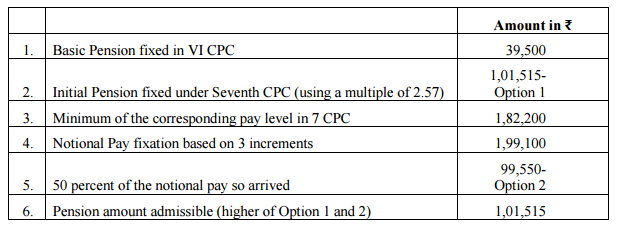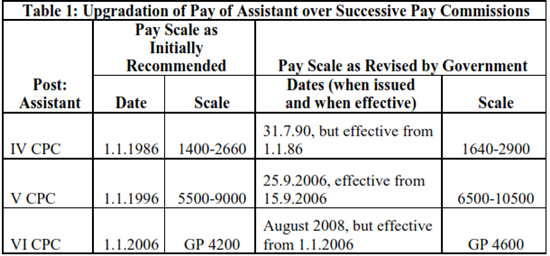Presenting the 7th CPC Report within the scheduled time and without much anomalies
One of our genuine reader Mr.M.Dorai says…
The Seventh Central Pay Commission have done an excellent job by presenting the VII CPC Report within the scheduled time and without much anomalies that were vastly found in VI CPC Report. Abolition of Pay Band and Grade Pay System deserve appreciation. Pay matrix have been worked out with brilliance which provide minimum entry scale as well as fitment table for existing employees according to the increments drawn unlike the 3 methods of fixation adopted by VI CPC among new recruits, promotees and existing employees which caused great disparity and anomaly in pay fixation.
The hike granted is also quite substantial which in fact is more than what VI CPC had granted. While the increase granted by VII CPC on pre-revised VI CPC basic pay actually ranges from 32% to 56% of the pre-revised Basic pay, the increase is projected as 15% wrongly by the media including the VII CPC in its comparison table which unnecessarily have been paving the way for resentment and unrest among the central government employees who would not have fully studied the report. While projecting the percentage of increase the VI CPC,had taken into account only the basic pay . Whereas the VII CPC had reckoned D.A. element to project the percentage of increase which gives a wrong picture of around 15% hike.
Therefore there should be no cause for resentment among the central government employees. They should rejoice over the benefits offered by the VII CPC. There is a overall increase of 25% to 40% in the gross emoluments which is more than what they received from the VI CPC. The retention of percentage of pension and percentage of commutation of pension and gratuity of 16.5 months and 300 days EL encashment on retirement shall steeply increase the take home retirement benefits by almost 60 to 70%.
In a nutshell the Chairman and Members of the VII CPC have done a commendable job and fulfilled their mission successfully ensuring justice to all levels of central government employees. Let us hope, the Government of India approve the recommendations without any changes and implement it .
Hats off to the Chairman and Members of the VII Central Pay Commission for presenting such an excellent report unseen in the history of pay commissions constituted so far.
Author: M.DORAI
One of our genuine reader Mr.M.Dorai says…
The Seventh Central Pay Commission have done an excellent job by presenting the VII CPC Report within the scheduled time and without much anomalies that were vastly found in VI CPC Report. Abolition of Pay Band and Grade Pay System deserve appreciation. Pay matrix have been worked out with brilliance which provide minimum entry scale as well as fitment table for existing employees according to the increments drawn unlike the 3 methods of fixation adopted by VI CPC among new recruits, promotees and existing employees which caused great disparity and anomaly in pay fixation.
The hike granted is also quite substantial which in fact is more than what VI CPC had granted. While the increase granted by VII CPC on pre-revised VI CPC basic pay actually ranges from 32% to 56% of the pre-revised Basic pay, the increase is projected as 15% wrongly by the media including the VII CPC in its comparison table which unnecessarily have been paving the way for resentment and unrest among the central government employees who would not have fully studied the report. While projecting the percentage of increase the VI CPC,had taken into account only the basic pay . Whereas the VII CPC had reckoned D.A. element to project the percentage of increase which gives a wrong picture of around 15% hike.
Therefore there should be no cause for resentment among the central government employees. They should rejoice over the benefits offered by the VII CPC. There is a overall increase of 25% to 40% in the gross emoluments which is more than what they received from the VI CPC. The retention of percentage of pension and percentage of commutation of pension and gratuity of 16.5 months and 300 days EL encashment on retirement shall steeply increase the take home retirement benefits by almost 60 to 70%.
In a nutshell the Chairman and Members of the VII CPC have done a commendable job and fulfilled their mission successfully ensuring justice to all levels of central government employees. Let us hope, the Government of India approve the recommendations without any changes and implement it .
Hats off to the Chairman and Members of the VII Central Pay Commission for presenting such an excellent report unseen in the history of pay commissions constituted so far.
Author: M.DORAI



















